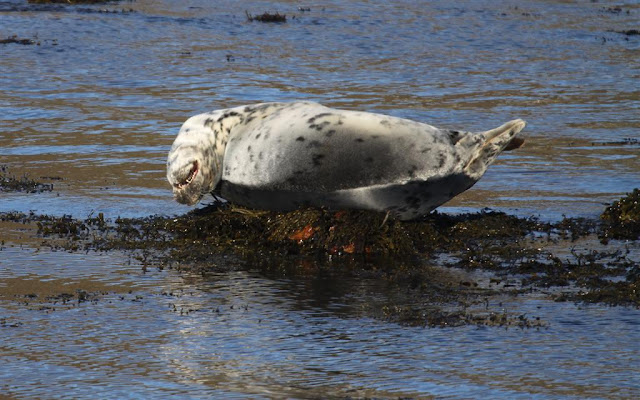Grey Seals are in good numbers at the moment and can be found huddled on rocks or bobbing around the coastline. They spend on average 80% of their waterborne time underwater and 20% at the surface. Each dive usually lasts between five and eight minutes and they have clever adaptations to help them stay underwater for so long. They take large reserves of oxygen down with them, but not in their lungs as we would. Instead the gas is attached to pigments such as haemoglobin in their blood and myoglobin in their muscles, pigments which have a strong affinity for oxygen. By having a much greater volume of blood than a terrestrial mammal of comparable size, and therefore more haemoglobin,
Grey Seals can take a lot of oxygen down without having lungs full of buoyant air which would impair their underwater manoeuvrability. Interestingly, when they do surface for air, their heart rates increase from 40 beats per minute to approximately 120. This allows for rapid gas exchange and allows for more time to be spent in search of food.
Grey Seals enjoying the sun (c) Richard Brown
Grey Seals come ashore to breed in the autumn, but it is still not fully understood why they haul out at this time of year. The most likely theory is that they come out to dry out their fur and enjoy the heat of the sun, both of which help to conserve energy. That temperature is important is supported by the observation that they always haul out in areas out of the cold wind.
Watching them in their undisturbed environment is fantastic, and with such large mammals perched awkwardly on exposed rocks, comedy moments are plentiful.
Yawning Grey Seal (c) Richard Brown
Wheatear numbers are gradually starting to increase and can be seen perched along the walls of the South End and West Coast. The first Chiffchaff of the year was caught and ringed in the Heligoland Trap at the Obs. Small Tortoiseshell butterflies are also on the wing, a good sign that spring is finally here!




No comments:
Post a Comment